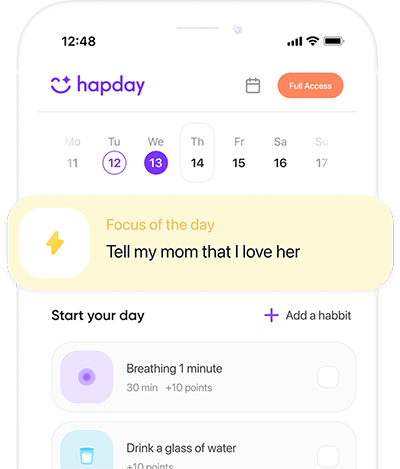Table of Contents
- Understanding Burnout
- Developing Resilience: The Path to Recovery
- Organizational Approaches to Combat Burnout
- The Road to Recovery
- Conclusion
Understanding Burnout
What Does Burnout Look Like?
Burnout is not just a passing phase of exhaustion; it’s a condition marked by emotional depletion, cynicism (or depersonalization), and a declining sense of personal accomplishment. As highlighted in the Journal of Occupational Health Psychology, individuals going through burnout often feel drained, disengaged, and ineffective at work.
Some common symptoms include:
- Persistent fatigue and trouble sleeping
- Frequent illness due to a compromised immune system
- Feelings of helplessness and hopelessness
- Reduced satisfaction and sense of achievement
- Disconnection from work activities
What Causes Burnout?
Burnout often results from a complex mix of personal, organizational, and societal pressures. Some typical culprits are:
- Overwhelming Workload: Demanding tasks without enough resources can lead to exhaustion.
- Lack of Control: Feeling powerless over job aspects like scheduling or task assignments.
- Unclear Job Expectations: Ambiguities in roles or responsibilities breed anxiety.
- Toxic Workplace Dynamics: Office politics, bullying, or insufficient peer support amplify stress.
- Poor Work-Life Balance: Little time for personal life and relaxation invites emotional fatigue.
The Broader Effects of Burnout
Burnout doesn’t just impact individuals; it takes a toll on organizations too. According to Gallup, employees experiencing burnout are 63% more likely to take sick leave and 2.6 times more inclined to seek other employment. This leads to reduced productivity, increased absenteeism, and higher turnover, causing significant financial strain on businesses.
Developing Resilience: The Path to Recovery
Resilience is your shield against life’s challenges—essentially, your ability to face setbacks head-on and come back stronger. While resilience won’t make problems vanish, it arms you with the strength to tackle them effectively, safeguarding your well-being and aiding recovery from burnout.
The Science Behind Resilience
Research tells us resilience isn’t just an inborn trait; it’s a dynamic process you can nurture with deliberate practice. As noted in the Journal of Personality and Social Psychology, resilience correlates with favorable outcomes like better health, enhanced emotional regulation, and greater life satisfaction.
How to Build Resilience
1. Embrace Self-Awareness
Knowing yourself is a cornerstone of resilience. Self-awareness helps you understand how your thoughts, emotions, and actions influence your coping mechanisms.
- Practice Mindfulness: Techniques like meditation and deep breathing can enhance focus and cognitive flexibility—key resilience factors, according to Psychological Science.
- Keep a Journal: Writing can help process experiences and spot stress triggers, fostering reflection and better coping strategies.
2. Cultivate Optimism
Optimism manifests as a hopeful outlook, which is vital for resilience. It fuels the expectation of positive outcomes despite adversity.
- Reframe Positively: Shift perspectives to see challenges as growth opportunities. The Journal of Applied Psychology notes optimistic employees perform better and experience less burnout.
- Practice Gratitude: Engage in activities like keeping a gratitude journal or expressing thanks, which research links to increased happiness and stress reduction.
3. Strengthen Social Connections
A robust support network is crucial for resilience. Connecting with others offers emotional comfort, practical help, and validation.
- Build Your Network: Foster relationships with friends, family, and colleagues to create a solid support system. The American Journal of Community Psychology highlights social support as a strong resilience indicator.
- Get Involved: Participate in community activities or support groups to cultivate a sense of belonging and purpose, which counters stress.
4. Enhance Emotional Regulation
Emotionally resilient individuals manage stress more effectively.
- Try Cognitive Behavioral Techniques: Effective in managing thoughts and emotions, CBT can lessen burnout symptoms, as confirmed by a Clinical Psychology Review meta-analysis.
- Be Emotionally Aware: Labeling emotions prevents them from being overwhelming, allowing for more constructive responses.
5. Prioritize Self-Care
Self-care routines boost mental, emotional, and physical well-being.
- Exercise Regularly: Physical activity alleviates stress. The Journal of Sports Sciences shows it’s effective in reducing anxiety and depression symptoms, enhancing resilience.
- Sleep Well: Adequate rest is vital for stress management. Aim for 7-9 hours of sleep nightly as advised by the National Sleep Foundation.
- Eat Healthy: A well-balanced diet supports overall health. According to Nutrients, nutrition impacts mood and cognitive function, influencing resilience.
6. Set Realistic Goals
Goals provide direction and motivation, anchoring resilience.
- Use SMART Goals: Creating Specific, Measurable, Achievable, Relevant, and Time-bound objectives fosters a sense of achievement and purpose.
- Stay Flexible: Being adaptable in the face of unexpected challenges is crucial. The Harvard Business Review emphasizes the resilience of adaptive individuals under stress.
Organizational Approaches to Combat Burnout
While building personal resilience is vital, organizations play a critical role in preventing and managing burnout. Here are strategies companies can employ to foster a healthier work environment:
1. Promote Work-Life Balance
Encourage employees to maintain personal and professional balance through flexible working conditions like remote options or flexible hours.
2. Provide Supportive Leadership
Leaders should actively engage with employees, providing resources and feedback to help manage workloads and stress.
3. Create a Positive Culture
A supportive, inclusive workplace culture enhances satisfaction and overall well-being. Fostering teamwork and recognizing achievements contribute significantly.
4. Offer Development Opportunities
Opportunities for skill advancement and career growth can boost motivation and resilience. Training and mentorship programs are excellent avenues.
5. Implement Employee Assistance Programs (EAPs)
Offer mental health support, like counseling and stress management workshops, ensuring employees have access to these vital resources.
The Road to Recovery
Recovering from burnout takes time and persistence. Here’s how you can navigate your way to recovery:
1. Acknowledge Burnout
Admitting you’re experiencing burnout is the first step toward healing and allows for proactive management of the issue.
2. Seek Support
Lean on friends, family, or mental health professionals for support and guidance throughout your recovery journey

